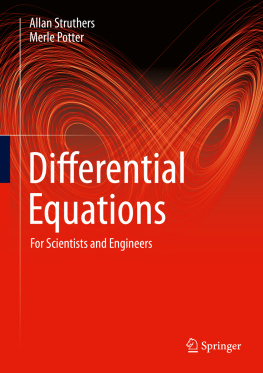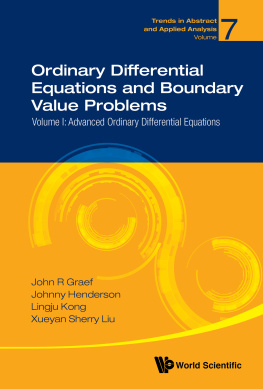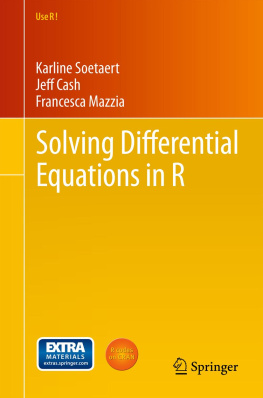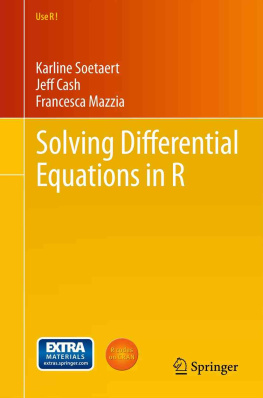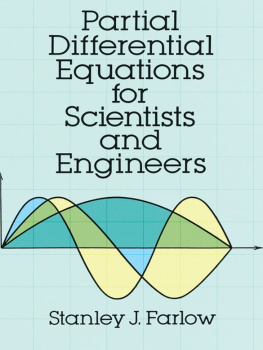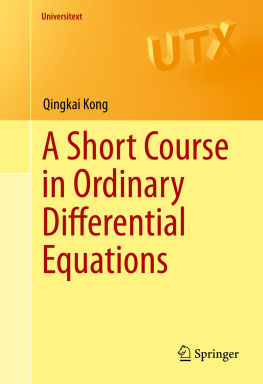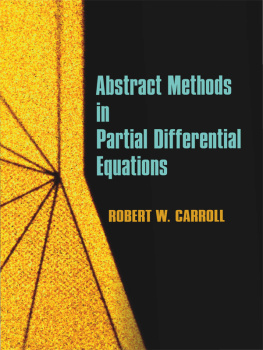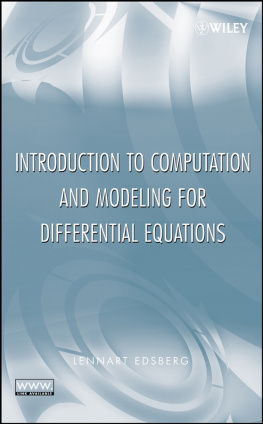.
Preface
.
The style of presentation is novel, and is intended to engage the reader at crucial points. The problems within the text are exercises designed to lead the reader into the subsequent text - it prepares them for what is to come. Some of these are quite simple, while others form substantial pieces of work which the impatient reader may avoid by continuing with the text. I refer to this approach as ask and answer (a question leads you into the answer, encouraging you to discover the ideas for yourself if you wish) as opposed to tell and test (we tell you in the text, then test what you have learnt in the exercises). Most sections have reinforcement exercises, and all chapters but the last have end-of-chapter exercises. These include essay type questions, which exercise your appreciation and understanding of the material.
These may also provide small group discussion topics. Also you are encouraged to write your own verbal summary of each chapter, as concisely as possible, and compare your result with the Appendix. Writing such summaries is surprisingly instructive, and provides you with an overview of the topic of the chapter, and the interrelations between its components. While answers to most exercises are included, you are encouraged to verify your answers for yourself where possible. This develops confidence and provides plenty of exercise in manipulative skills. Some sections, and exercises, are projects.
These give you the opportunity to develop material for yourself, by reference to other books such as those in the bibliography, or by your own work. Such material is optional and provides opportunities for the enthusiastic reader to delve deeper. Lastly, I have tried to make the material enjoyable. That doesnt mean it will always be easy! Bill Cox, September 1995
Acknowledgements
My warm thanks to Barry Martin and Chris Collinson for careful reading of the manuscript and many helpful comments. Also many thanks to Val Tyas for her forbearance in word-processing the many iterations (this is
definitely the last one), and Graham Smith for the diagrams. Any remaining errors are entirely mine, of course.
Bill Cox, Computer Science and Applied Mathematics, Aston University
Introduction and a Look Ahead
1.1 Getting an overview
Coming to a new mathematics topic such as differential equations is like entering a new land covered with forests of details, conceptual peaks, rivers and highways of understanding, exquisite hidden valleys of interest, and broad featureless plains of monotony. There are various ways you can explore a new land: a guided tour with an expert; a follow the colour coded signposts forest walk; a leisurely cruise along the main highways, taking in the sights; live there for a while, wandering through the highways and byways, climbing the peaks by different routes. But however you do it, before you delve into the guide book, you will greatly benefit from a preliminary study of the atlas, to get your bearings. The problem with this geographical analogy is that whilst we are already familiar with the geographical and topographical terminology needed to describe the features of a new land, this is rarely the case in a new mathematics topic it is doubly difficult to distinguish the wood from the trees if you dont know what either looks like! However, with some imagination we can lay out the broad features of a new topic using already familiar ideas and thats what we will do in this chapter, relying only on very elementary knowledge of calculus and differential equations. The study of differential equations can be split into a number of broad areas Notation and terminology What is the order of a differential equation? What is a solution to a differential equation? Analytical aspects Existence theorems under what conditions does a solution exist? Uniqueness theorems when is a solution unique? Methods of solution Range of techniques and their applicability. Exact and approximate methods.
Applications Constructing and solving models with differential equations.
Depending on your interests, some of these areas may be more relevant than others to you. For example the student of pure mathematics might reasonably be expected to use and prove an existence theorem for a particular class of equations. An engineer on the other hand might be more interested in solution methods (particularly numerical methods). The remaining sections of this chapter enable you to develop an overview of the subject matter and structure of the rest of the book, whatever your interests.
1.2 Notation, terminology and analytical aspects
.
1.2 Notation, terminology and analytical aspects
.
For the most part the rest of this book is concerned with linear equations. There is a large amount of theoretical knowledge relating to linear equations, as well as many different solution methods. Perhaps the central idea is that of the principle of superposition of solutions, which enables us to construct further solutions of linear equations from linear combinations of known solutions. Another powerful general principle is the construction of the general solution of an inhomogeneous ordinary differential equation from the general solution of the associated homogeneous equation and a particular solution of the inhomogeneous equation (complementary function + particular integral). This is a general principle applicable to all inhomogeneous linear equations, not just-differential equations, and is a fundamental result in the theory of linear transformations. These, and other, general principles are important both at the theoretical and the practical level.


